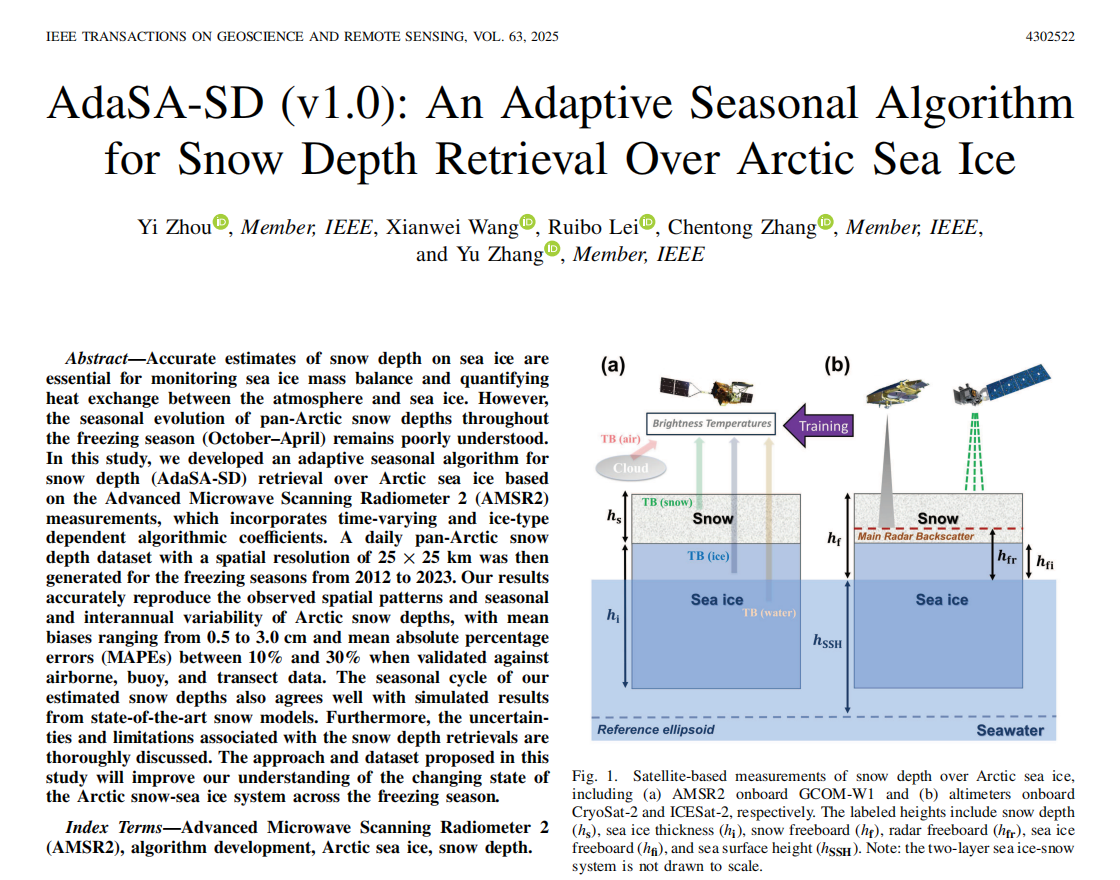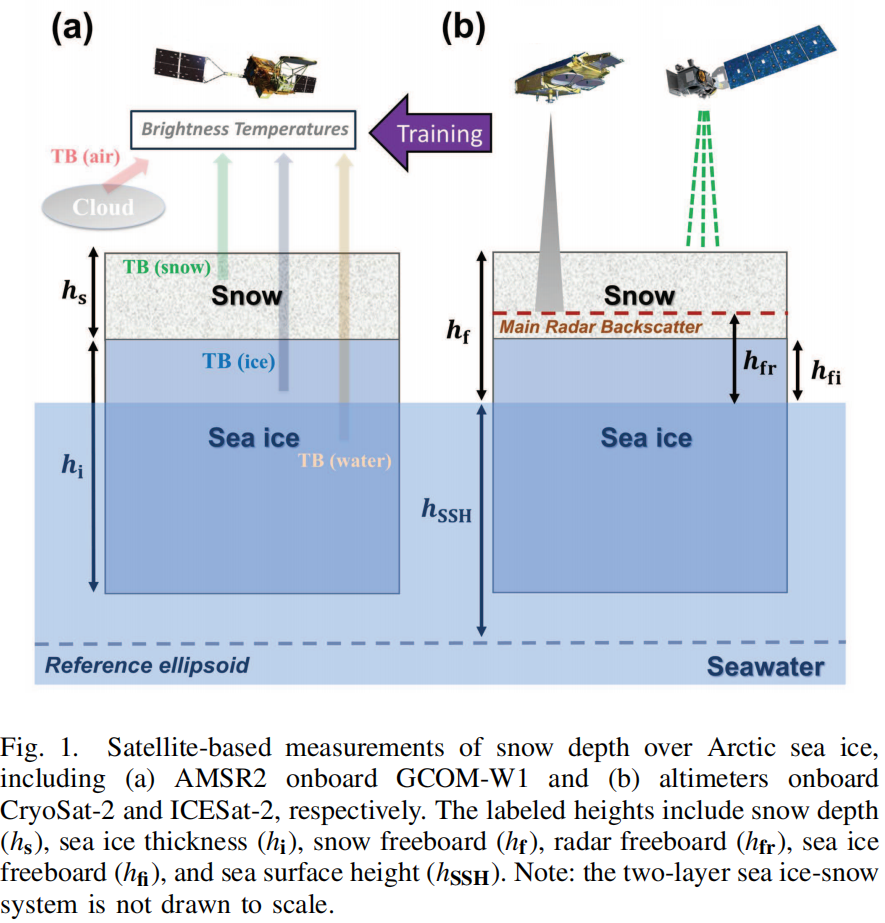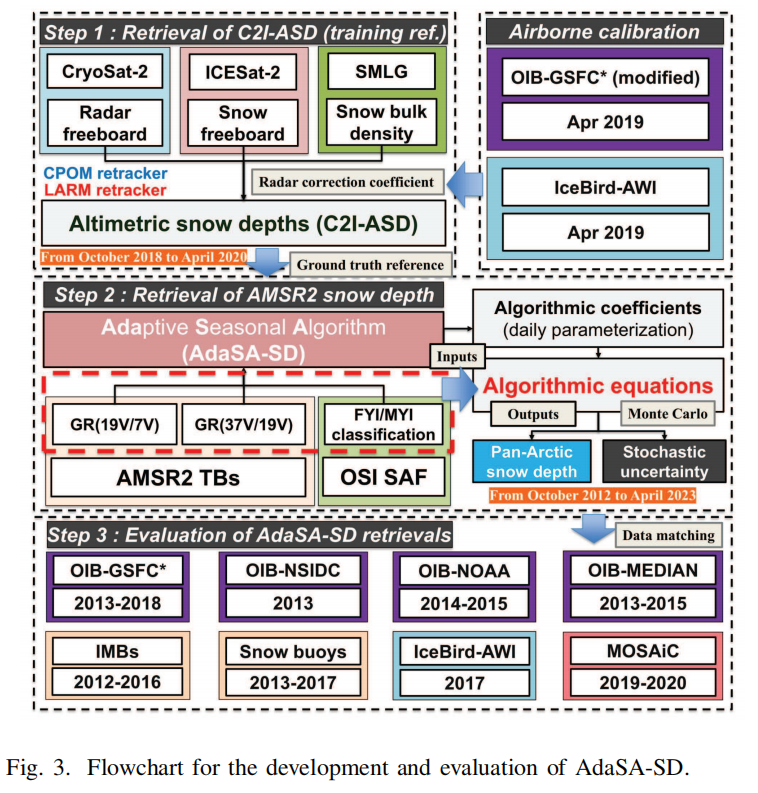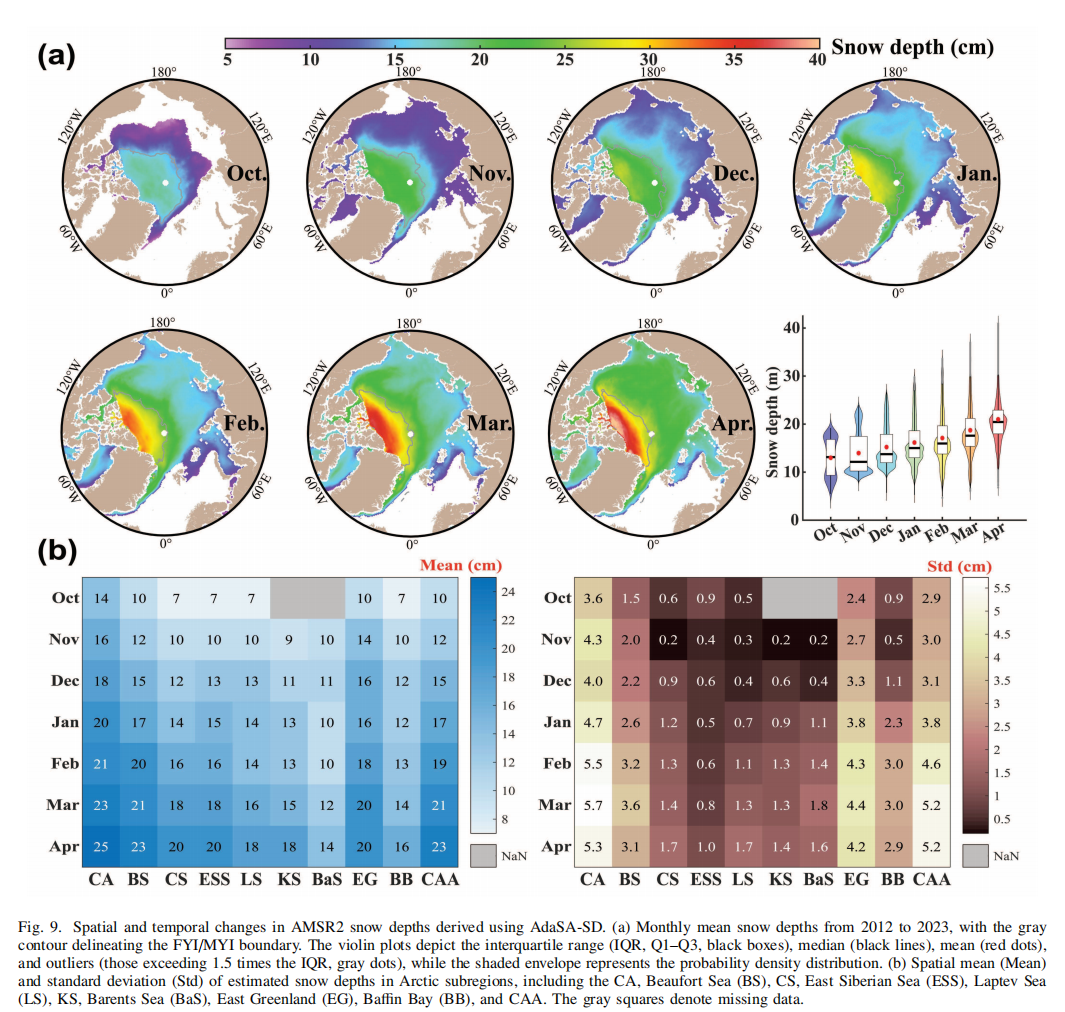Recently, PhD candidate Zhou Yi from the School of Oceanography, Shanghai Jiao Tong University published a research paper titled "AdaSA-SD (v1.0): An Adaptive Seasonal Algorithm for Snow Depth Retrieval Over Arctic Sea Ice" in the internationally renowned Earth science and remote sensing journal IEEE Transactions on Geoscience and Remote Sensing (Impact factor: 8.6). The corresponding authors of this paper are Associate Professor Wang Xianwei from the School of Oceanography, Shanghai Jiao Tong University and Researcher Lei Ruibo from the Polar Research Institute of China. The School of Oceanography and the Key Laboratory of Polar Ecosystem and Climate Change (Shanghai Jiao Tong University), are the primary affiliations.
Key knowledge gaps: Snow, as the natural material with the highest reflectance and strongest insulation properties on Earth, plays a key role in regulating the planet's climate. Without snow, the Earth's atmospheric, terrestrial, and oceanic systems would continuously accumulate energy through positive feedback mechanisms, leading to an accelerated rise in global temperatures. Accurately estimating the snow depth on Arctic sea ice is crucial for monitoring the sea ice mass balance and quantifying the heat exchange between the atmosphere and sea ice. However, due to the limitations of observational technologies, there is still a lack of systematic understanding regarding the seasonal variations of snow depth throughout the entire Arctic freezing season (October to April of the following year).

Development of Remote Sensing Algorithm: This study developed a seasonal adaptive snow depth retrieval algorithm (AdaSA-SD) suitable for the Advanced Microwave Scanning Radiometer 2 (AMSR2) aboard the Global Change Observation Mission 1st-Water "SHIZUKU" (GCOM-W1) satellite. For the first time, time-varying and ice age-dependent parameterization coefficients were introduced.
Satellite-derived Snow Depth Data: This study generated a daily pan-Arctic snow depth dataset for the entire freezing season from 2012 to 2023, with a spatial resolution of 25 km × 25 km. Overall, satellite observations revealed significant spatial distribution patterns and seasonal accumulation characteristics of snow depth across the entire Arctic Ocean (Fig. 9). Through comprehensive validation with airborne radar, buoys, and transect measurements, the AdaSA-SD (v1.0) algorithm accurately reproduced the observed spatial distribution patterns of snow depth and their seasonal and interannual variations, with mean biases ranging from 0.5 to 3.0 cm and mean absolute percentage errors between 10% and 30%.
Funding and Acknowledgments: This work was supported in part by the National Natural Science Foundation of China under Grant 42276237, Grant 42325604, and Grant 42376231; in part by the Oceanic Interdisciplinary Program of Shanghai Jiao Tong University under Grant SL2022PT205 and Grant SL2022ZD107; in part by the National Key Research and Development Program of China under Grant 2019YFA0607001; and in part by the Natural Science Foundation of Shanghai under Grant 22ZR1427400.
Website link: https://ieeexplore.ieee.org/document/11098804



Edited by Prof. Wang Xianwei from the School of Oceanography, Shanghai Jiao Tong University
